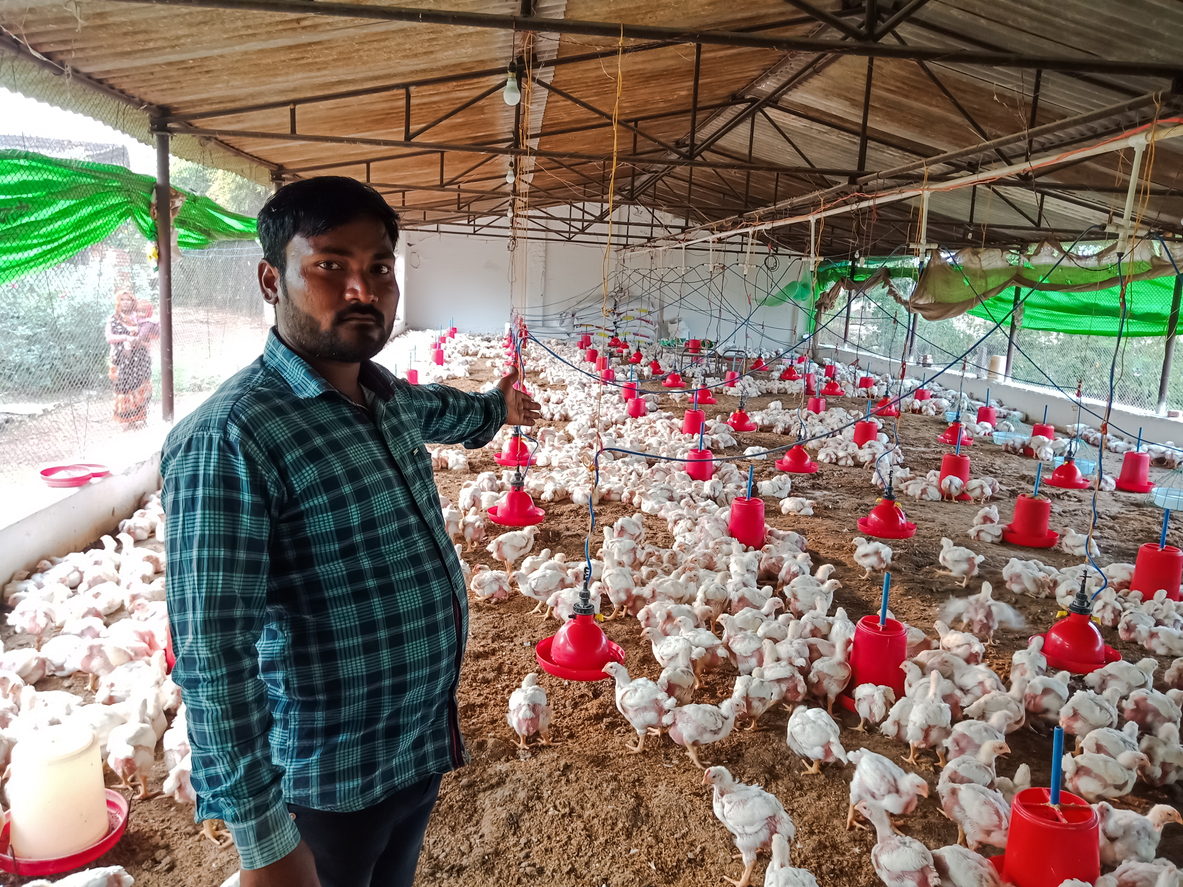A new modeling study suggests the global use of antimicrobials in food-producing animals will continue to climb over the decade without further efforts to curb such use.
The study, published yesterday in PLOS Global Public Health, used previously published data from individual countries, the World Organization for Animal Health (WOAH), and the United Nations (UN) Food and Agriculture Organization (FAO) to estimate the use of antimicrobials in food-producing animals in 2020 and 2030. Their model estimates an 8% increase over that period, along with more intense use of antimicrobials in meat production.
China, Brazil, India, US, Australia top consumers
The authors of the study, a team led by researchers with Swiss research university ETH Zurich, say the purpose of the study was to fill in the gaps on what is known about the use of medically important antibiotics in livestock and poultry in countries around the world. Medically important antibiotics are those that are also used in human medicine.
Previous research by senior author Thomas Van Boeckel, PhD, estimated that antimicrobial use in food-animals represented roughly 73% of all antimicrobial use worldwide in 2017. Antimicrobial stewardship advocates consider the widespread use of medically important antibiotics in animals raised for meat to be a significant contributor to the rise and spread of drug-resistant bacteria. But few countries regularly report data on antimicrobial use in food animals.
Global monitoring of antimicrobial use is essential.
The authors note that while WOAH gathers data from 157 countries through annual surveys, those data are aggregated by region, and the list of countries is not publicly available. And outside of the 31 European Union countries that report data to the annual European Surveillance of Veterinary Antimicrobial Consumption report, only 9 countries routinely publish annual reports on the use of medically important antibiotics in livestock and poultry. Six of the 10 largest meat producers in the world (Brazil, Russia, Mexico, Argentina, India, and Vietnam) are not among them.
For their model, the researchers inputted data from national reports, WOAH regional reports, and scientific studies covering 42 countries and combined the data with FAO projections of animal counts for cattle, sheep, chicken, and pigs to come up with estimates of antimicrobial use in 229 countries in 2020 and 2030. They used maps of animal densities to estimate the intensity of antibiotic use in meat production—ie, the rate of antibiotic use adjusted by the size of a country's animal population.

Their model estimated global antimicrobial use in cattle, sheep, chicken, and pigs at 99,502 tonnes (109,700 US tons) in 2020. Based on current trends, that number would rise to 107,472 tonnes (118,470 US tons) in 2030. They estimated global antimicrobial use intensity would climb from 79.3 milligrams per population correction unit (mg/PCU) to 85.6 mg/PCU. The intensity of antibiotic use ranged from 337.8 mg/PCU in Thailand to 4.4 mg/PCU in Norway.
China, Brazil, India, the United States, and Australia were found to be the top 5 consumers of antibiotics for use in cattle, sheep, chicken, and pigs in 2020 and were predicted to remain in the top 5 in 2030. Pakistan was predicted to have the largest relative increase in antibiotic use in meat production over the decade, and 67% of "hot spot areas"—where antibiotic use in meat production is most intense—were in Asia.
Other antibiotic intensity hot spots were identified in Brazil, the US midwest, northern Italy, and central Poland. Less than 1% of hot spots were in Africa.
Data gap could hinder efforts to curb use
The authors note that their study, like all modeling studies, has its limitations. One is that it was conducted under a "business as usual" scenario and doesn't account for actions that countries might take to curb antimicrobial use in meat production in the coming years. But ultimately, they say it highlights the need for more countries to regularly report data on antibiotic use in food-producing animals.
"Global monitoring of antimicrobial use is essential: first, to track progress in reducing the reliance of farming on antimicrobials," they wrote. "Second, to identify countries where antimicrobial-stewardship efforts should be targeted to curb antimicrobial resistance."
David Wallinga, a senior scientist with the Natural Resources Defense Council whose research focuses on antibiotic use in livestock and poultry, agrees.
"They make the excellent point that for the vast majority of countries around the world, there's absolutely no reporting on antimicrobial use in animals," Wallinga, who was not involved in the study, told CIDRAP News. "And that's just a huge gap, especially when almost three quarters of all the medically important antibiotics are used in animals worldwide."
For the vast majority of countries around the world, there's absolutely no reporting on antimicrobial use in animals.
Wallinga says this gap is particularly important, given that UN member states have been tasked with developing and implementing national action plans to combat antimicrobial misuse and resistance in humans, animals, and the environment.
"If you're not regularly reporting on use, how can you possibly take informed measures to curb unnecessary use and avoidable use?" he asked.
Steven Roach of the Food Animal Concerns Trust says that while an 8% increase in the use of antibiotics in animal agriculture by 2030 would be "catastrophic," he pointed to some signs for optimism. Among them is the November 2022 Muscat Manifesto on AMR, in which India and 38 other countries pledged to reduce the amount of antimicrobials used in animal agriculture by 30% to 50% by 2030.
"If the other four top users of antibiotics, including the US, made similar commitments, this could start moving the globe in the right direction when it came to stopping antibiotic overuse in agriculture and the resistance that inevitably comes with it," Roach said.























